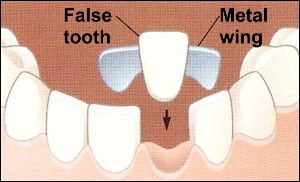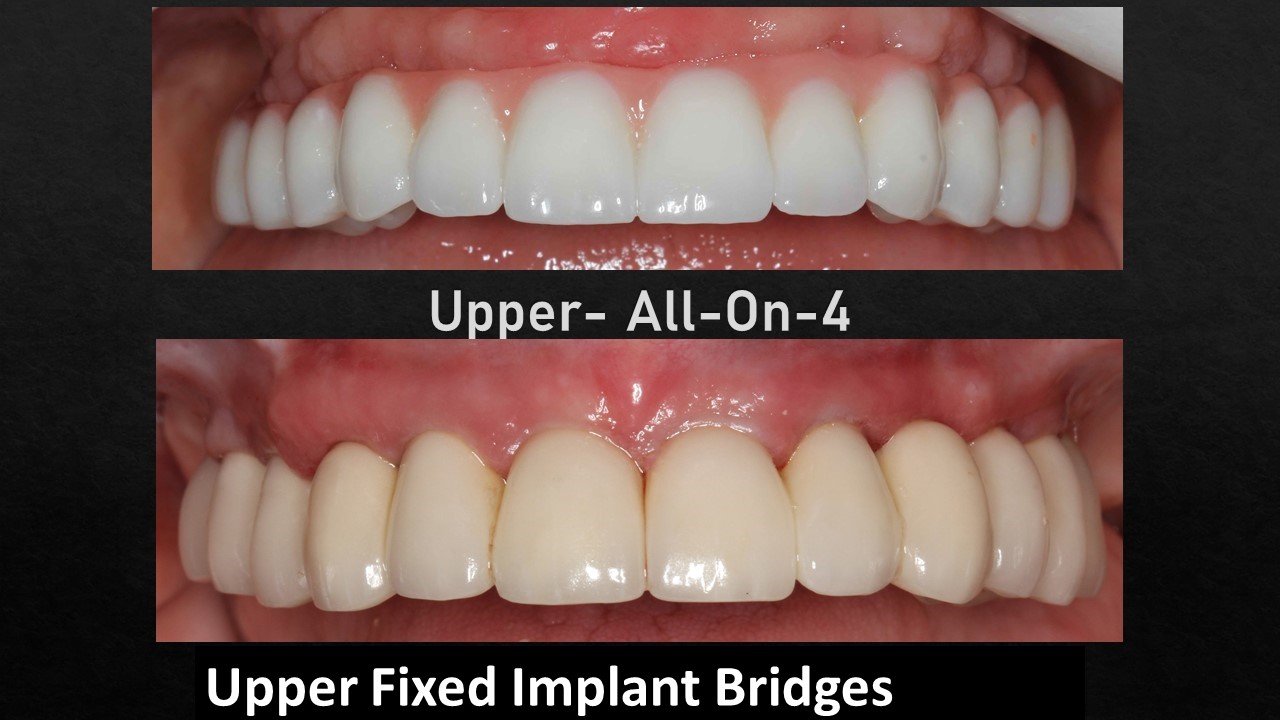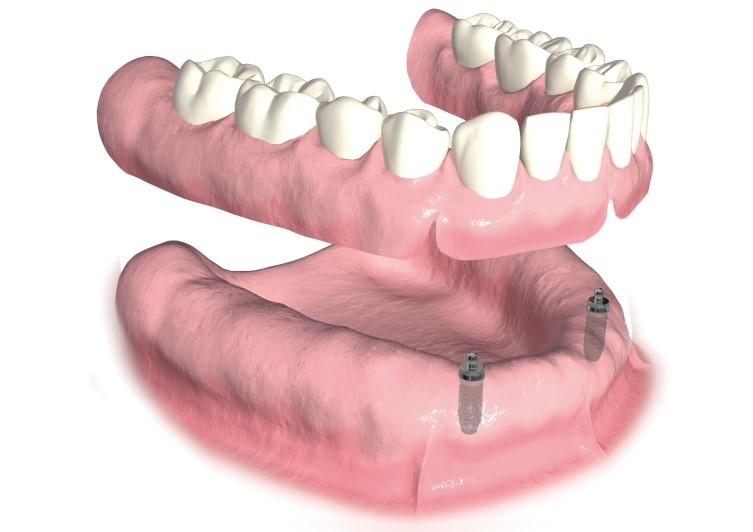What are my options if I have missing teeth?
According to epidemiological studies, it is estimated that 178 million Americans are missing at least one tooth and about 40 million Americans are missing all of their teeth. 30% of adults 65-74 years of age have no natural teeth and as we age, the problem gets worse.
Most patients would find losing a front tooth to be an immediate cause for concern. It may cause social or psychological issues and may even impact your ability to find work. Losing a back tooth, however, can be equally problematic even if the issues are not immediately noticeable. The surrounding teeth can shift and drift into the open space, affecting the way you chew food and making it more difficult to clean the area. If left untreated over a long period of time, it may potentially lead to gum disease, tooth decay, and even further tooth loss.
Modern dentistry offers us many solutions to replace missing teeth. However, to have the widest array of options and best outcomes, treatment should be planned soon after the tooth is lost. The bone around a missing tooth will resorb naturally over time if it remains unstimulated. Excessive resorption complicates any treatment needed and, in extreme cases, may rule out some options entirely. If you lose a tooth, see a prosthodontist as soon as possible.
The following scenarios are meant to provide you with an idea of the various options available today. Remember to see a prosthodontist to get a detailed examination and diagnosis so you are best equipped to make the right decision for your unique situation.
A missing tooth can be replaced optimally by a non-removable solution such as a bridge or by using a dental implant. Today, a dental implant is the first choice of treatment as it is predictable and offers a long-lasting solution, which does not decay like natural teeth! When properly placed, dental implants have a very high success rate of 98%.
The longer you wait to replace a missing tooth after it is lost, the more bone is lost. Sometimes the bone loss can be so significant that it can prevent your ability to get a dental implant. If you lose a tooth, go to a prosthodontist as soon as possible.
Fortunately, with today’s dental advancements, there are a number of solutions.
MISSING ONE TOOTH:
- Implant and Single Crown
- Fixed Bridge
- Adhesive Bridge
- Removable Partial Denture/Flipper
IMPLANT AND SINGLE CROWN
 If you’re missing a single tooth and if the underlying bone and gums are healthy, you may be a good candidate to receive a dental implant and a single crown. This involves placing a titanium screw in the bone to replace the missing root and connecting it to a metal or ceramic crown on top. When properly placed, dental implants have very high success rates (up to 98%) and look, feel and function just like natural teeth. One significant advantage of this procedure is that you do not have to remove your crown for cleaning and it is kinder to the neighboring teeth since they can be left untouched. Implants are also impervious to tooth decay so patients with higher risk may find that implants last longer than other options relying on natural teeth.
If you’re missing a single tooth and if the underlying bone and gums are healthy, you may be a good candidate to receive a dental implant and a single crown. This involves placing a titanium screw in the bone to replace the missing root and connecting it to a metal or ceramic crown on top. When properly placed, dental implants have very high success rates (up to 98%) and look, feel and function just like natural teeth. One significant advantage of this procedure is that you do not have to remove your crown for cleaning and it is kinder to the neighboring teeth since they can be left untouched. Implants are also impervious to tooth decay so patients with higher risk may find that implants last longer than other options relying on natural teeth.
FIXED BRIDGE
 Another option is to have a fixed bridge, where the neighboring teeth are reshaped for crowns. Just like in civil engineering, these two teeth serve as the “abutments” and a three-tooth bridge is cemented on, supporting an artificial tooth in the middle. Just like implants, bridges do not need to be removed for cleaning. However, specialty cleaning aids may be required (interdental brushes, floss threaders or water flossers) in order to keep the abutment teeth healthy. If any future disease affects those teeth such as decay or gum disease, the entire restoration may fail. Another disadvantage is that this procedure requires a hefty sacrifice of tooth structure, particularly if the adjacent teeth were pristine to begin with.
Another option is to have a fixed bridge, where the neighboring teeth are reshaped for crowns. Just like in civil engineering, these two teeth serve as the “abutments” and a three-tooth bridge is cemented on, supporting an artificial tooth in the middle. Just like implants, bridges do not need to be removed for cleaning. However, specialty cleaning aids may be required (interdental brushes, floss threaders or water flossers) in order to keep the abutment teeth healthy. If any future disease affects those teeth such as decay or gum disease, the entire restoration may fail. Another disadvantage is that this procedure requires a hefty sacrifice of tooth structure, particularly if the adjacent teeth were pristine to begin with.
ADHESIVE BRIDGE

Sometimes, the situation calls for a different approach to restoring missing teeth. For example, young patients who were born missing a few teeth or who lost them due to trauma are often not ready to receive dental implants due to their incomplete growth. In these cases, an adhesive bridge may be used instead. This consists of an artificial tooth made with one or two “wings” on the side. The wings are then tacked on to the back of the neighboring teeth with an adhesive cement to hold the artificial tooth in place. While this approach is much more conservative since the adjacent teeth do not need to be heavily reshaped, it also carries an increased inherent risk of the whole prosthesis coming loose, particularly if the patient has a heavy bite or eats hard food on the bridge.
REMOVABLE PARTIAL DENTURE/FLIPPER
 You could also have a removable partial denture (often referred to as a flipper) to replace the missing tooth. As the name implies, this prosthesis is designed to be easily removed for cleaning after meals. This also means patients are often less secure about it as it may come loose while talking, laughing or singing. Chewing on such removable dentures are also not as comfortable as they are unable to bear load well and may collect food during meals. Depending on the size of the partial, they may also interfere with speech and take a bit of time to get used to. Despite all this, flippers are sometimes recommended as temporary prostheses, particularly when waiting for healing involved when implants or other complex procedures are planned.
You could also have a removable partial denture (often referred to as a flipper) to replace the missing tooth. As the name implies, this prosthesis is designed to be easily removed for cleaning after meals. This also means patients are often less secure about it as it may come loose while talking, laughing or singing. Chewing on such removable dentures are also not as comfortable as they are unable to bear load well and may collect food during meals. Depending on the size of the partial, they may also interfere with speech and take a bit of time to get used to. Despite all this, flippers are sometimes recommended as temporary prostheses, particularly when waiting for healing involved when implants or other complex procedures are planned.
MISSING MULTIPLE TEETH:
- Fixed Implant Bridge
- Removable Partial Denture
FIXED IMPLANT BRIDGE
 With the advent of dental implants, missing teeth can be restored very predictably. Multiple implants can be splinted together to support a bridge, allowing us to restore an entire missing segment. These are the closest replacement for natural teeth since they are anchored solidly in bone and can withstand chewing forces. When well-planned and well-designed, implant bridges can look, feel and function like the teeth they are replacing.
With the advent of dental implants, missing teeth can be restored very predictably. Multiple implants can be splinted together to support a bridge, allowing us to restore an entire missing segment. These are the closest replacement for natural teeth since they are anchored solidly in bone and can withstand chewing forces. When well-planned and well-designed, implant bridges can look, feel and function like the teeth they are replacing.
REMOVABLE PARTIAL DENTURE
 In the past, once too many teeth were missing, the only option was to get removable partial dentures. These are custom-made from a mold of your mouth and are fabricated out of pink acrylic, to mimic the gum, and white acrylic to replace the teeth. Sometimes, there may be metal frames embedded in dentures to support and strengthen them. Partial dentures usually rely on clasps to keep them in place. These are flexible metal wires that hold on to the neighboring teeth which may show when smiling or speaking. Eating with these is usually challenge for most patients since bite forces are borne by the soft gum tissues under the dentures. It takes time to retrain yourself in order to bite, chew and speak comfortably.
In the past, once too many teeth were missing, the only option was to get removable partial dentures. These are custom-made from a mold of your mouth and are fabricated out of pink acrylic, to mimic the gum, and white acrylic to replace the teeth. Sometimes, there may be metal frames embedded in dentures to support and strengthen them. Partial dentures usually rely on clasps to keep them in place. These are flexible metal wires that hold on to the neighboring teeth which may show when smiling or speaking. Eating with these is usually challenge for most patients since bite forces are borne by the soft gum tissues under the dentures. It takes time to retrain yourself in order to bite, chew and speak comfortably.
MISSING ALL TEETH IN ONE (OR BOTH) ARCH(ES):
- Implant-supported fixed denture (some other names for implant-supported fixed dentures include:)
- Permanent denture
- All-On-4 denture
- Fixed denture
- Hybrid denture
- Fixed implant bridges
- Implant-retained overdenture
- Removable complete denture
IMPLANT-SUPPORTED FIXED DENTURE
FIXED IMPLANT BRIDGES
 Like implant-supported fixed dentures, fixed implant bridges are also permanently attached and not removable. The main difference is that, instead of replacing all the teeth with a one-piece structure, the arch is restored segmentally with multiple bridges. Depending on the amount of bone available and the position of the implants, this may allow us to make bridges without any pink material to replace the gum tissues, which some patients find less bulky and more esthetic.
Like implant-supported fixed dentures, fixed implant bridges are also permanently attached and not removable. The main difference is that, instead of replacing all the teeth with a one-piece structure, the arch is restored segmentally with multiple bridges. Depending on the amount of bone available and the position of the implants, this may allow us to make bridges without any pink material to replace the gum tissues, which some patients find less bulky and more esthetic.  Another advantage is that individual segments can be repaired or replaced without affecting the others if there is any maintenance work needed in the future. However, the total number of implants needed may increase since each small segment requires 2-3 implants for support.
Another advantage is that individual segments can be repaired or replaced without affecting the others if there is any maintenance work needed in the future. However, the total number of implants needed may increase since each small segment requires 2-3 implants for support.
IMPLANT-RETAINED OVERDENTURE
There are some caveats to remember when using implant-supported overdentures. Firstly, these are ultimately still removable prostheses that have to be taken out for hygiene after every meal and at night before bed. They are also made of acrylic, much less durable compared to metals or ceramic, so excessive bite forces can lead to breakage or chipping. Finally, the nature of the snaps means they will wear out and get looser over time, depending on how hard you are on the dentures. Part of regular maintenance means visiting your dentist once or twice a year and occasionally having the snaps replaced.
REMOVABLE COMPLETE DENTURE
Most of the time, patients experience much more difficulty when using their lower dentures. Upper dentures are able to rely on the palate for suction and support while lower dentures have to contend with a thin ridge of bone and a large, active tongue as a neighbor that tends to cause them to pop out. If you find them extremely difficult to manage, it may be worth considering implant-retained overdentures (see above) to help anchor them in place.
Over time, the bone that supports complete dentures tends to shrink since there is no direct stimulus from teeth or implants. This resulting in a looser fit as the internal shape of the denture no longer matches the corresponding gum tissues. Seeing your dentist at this point to re-adapt the dentures may help but excessive shrinkage may require an entirely new set of dentures to be made.
Please note that all these examples are meant to give you an idea of the options available for a particular dental problem you may have. There may be many more pros and cons associated with each option, particularly when taking your unique situation into account. The best way to know for sure before making your decision is to see a prosthodontist for a detailed examination and to discuss your concerns. Our office offers complimentary consultation – feel free to schedule an appointment with Dr. Tan if you want to know more about what your options are!

 A more economical way to replace an entire arch is simply to make a removable complete denture. However, if you or a loved one has experience with complete dentures, you might already know that the most difficult part about using them is keeping them in the mouth! An implant-retained overdenture solves this problem by relying on custom attachments that snap onto a few underlying implants. These snaps allow the denture to stay in place when eating or speaking and thus much greater comfort when using them.
A more economical way to replace an entire arch is simply to make a removable complete denture. However, if you or a loved one has experience with complete dentures, you might already know that the most difficult part about using them is keeping them in the mouth! An implant-retained overdenture solves this problem by relying on custom attachments that snap onto a few underlying implants. These snaps allow the denture to stay in place when eating or speaking and thus much greater comfort when using them. For many decades, the only option for patients missing all their teeth was to make a set of removable complete dentures. These are made of pink and white acrylic and rely entirely on your gums for support. Likewise, it is a combination of the gums, cheeks, tongue and saliva that help them stay in while speaking or chewing. This naturally means that some patients will handle complete dentures better than others since using them effectively is a skill that takes a fair amount of practice. New dentures can take weeks to months to get used to, particularly if you have never tried wearing dentures before. It may also involve many trips to the dentist to get adjustments made and plenty of perseverance in order to become a successful denture-wearer.
For many decades, the only option for patients missing all their teeth was to make a set of removable complete dentures. These are made of pink and white acrylic and rely entirely on your gums for support. Likewise, it is a combination of the gums, cheeks, tongue and saliva that help them stay in while speaking or chewing. This naturally means that some patients will handle complete dentures better than others since using them effectively is a skill that takes a fair amount of practice. New dentures can take weeks to months to get used to, particularly if you have never tried wearing dentures before. It may also involve many trips to the dentist to get adjustments made and plenty of perseverance in order to become a successful denture-wearer.